The Bahamas’ path to independence was a transformative journey, fraught with challenges, but ultimately fueled by the determination of its people. Prior to becoming independent, the Bahamas struggled with issues of racial injustice, economic inequality, and the call for self-government.
The formation of the Progressive Liberal Party (PLP) and key events like the Burma Road Riot and the General Strike of 1958 marked significant turning points in the fight for civil rights and political change. This article delves into the complexities of pre-independence politics in the Bahamas, highlighting the advancements made and the struggles endured in the pursuit of independence.
Join us as we explore the fascinating history of the Bahamas’ struggle for independence and reveal the extraordinary tales, crucial moments, and joyous occasions that influenced the course of the country. Learn about the Bahamian people’s hardships, achievements, and tenacious spirit to understand how they came to be a proud and independent nation.
Pre-Independence Politics
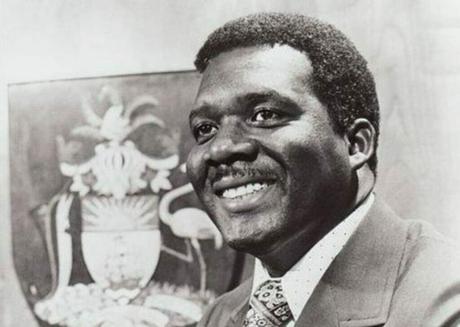
In the early days of colonial rule, the political landscape of the Bahamas was characterized by a power dynamic heavily favoring British colonizers. The richer white minority held much of the political power and advantages in the highly divided Bahamian society along racial and economic lines. Black Bahamians, who made up the majority of the population at the time and demanded more rights and representation, caused a shift in political power in the middle of the 20th century.
The Bahamas were going through a time of turmoil and change as they dealt with issues of racial injustice, economic inequality, and the rising demand for self-governance. In 1953, the progressive liberal party, the PLP, was formed with the aim of dismantling these systemic issues. The PLP, under the leadership of Sir Lynden Pindling, made significant strides towards this end, laying the groundwork for a push towards independence.
Advancements and Struggles in Pre-Independence Politics
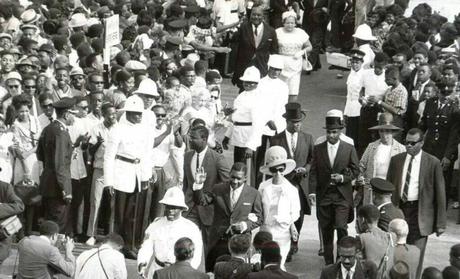
Examples of significant events and developments during the period of pre-independence politics in the Bahamas:
- Formation of the Progressive Liberal Party (PLP) in 1953: The establishment of the PLP marked a turning point in Bahamian politics. Led by Sir Lynden Pindling, the PLP aimed to address racial inequality and economic disparities, advocating for greater rights and representation for black Bahamians.
- The Burma Road Riot (1942): The “Burma Road Massacre,” as this incident is often known, was a turning point in the fight for civil rights. After the unjust shooting of several black soldiers by British colonial police officers, riots erupted in Nassau, demanding justice and an end to racial discrimination.
- Women’s suffrage movement: Prior to the Bahamas’ independence, women there battled for the ability to cast ballots and take part in political life. In 1961, suffrage was granted to all adult Bahamian women, allowing them to exercise their democratic rights.
- The labor movement and trade unions: Trade unions were formed by employees in the Bahamas to fight for better working conditions, just pay, and workers’ rights. The labor movement was instrumental in upending the prevailing power structures and promoting working-class unity.
- The General Strike of 1958: Frustrated by social and economic inequalities, a general strike was organized by trade unions, paralyzing the country for nearly two months. This strike highlighted the demands of workers and helped galvanize the push for political change.
- The Road to Majority Rule: A increasing movement in favor of majority rule emerged in the 1960s with the goal of ensuring that the political power reflected the demographics of the nation. The PLP gained strength via political mobilization and grassroots action, which helped it win a historic election in 1967 and pave the road for ultimate independence.
These examples illustrate the complexities and challenges faced by the Bahamas in its journey towards independence. Significant advancements in the battle against racial inequity, the empowerment of underprivileged communities, and the desire for self-governance were made during the pre-independence era. These developments set the stage for the subsequent political advancements and the eventual achievement of independence in 1973.
The Independence Movement
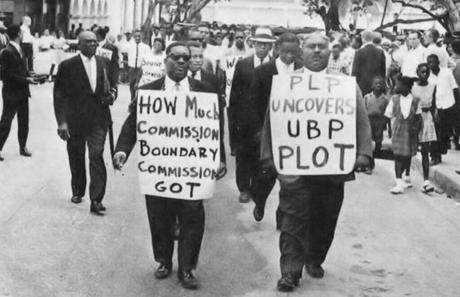
In the fertile ground of change that was the Bahamian political landscape in the late 1950s and early 1960s, the seeds for the independence movement were planted. On the road to independence, the PLP’s electoral triumph in the 1967 general elections—the first time a majority black government was chosen—was a critical turning point. This victory was seen as a direct rejection of British rule, a clarion call for freedom that was echoing throughout the islands.
The Bahamas Independence Act was passed by the British parliament in 1973, marking the legal end of colonial rule. But it was more than just a piece of paper; it was a concrete representation of the Bahamian spirit and aspiration for self-government. The Bahamas’ transformation from a British colony to an independent country was the result of a protracted fight, demonstrating the tenacity and tenacity of the Bahamian people.
Major Players
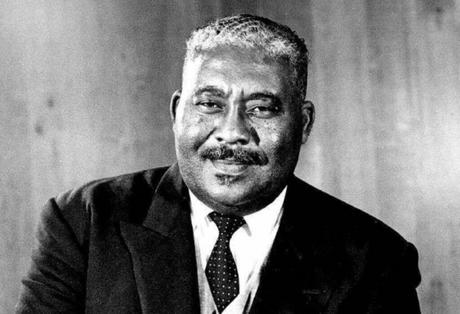
The independence movement was steered by several influential individuals, with Sir Lynden Pindling, the “Father of the Nation,” at the helm. Pindling’s charisma and leadership played a crucial role in rallying the Bahamian people around the cause of independence. He shaped the history of the nation while serving as prime minister for an incredible 25 years.
Alongside Pindling, Milo Butler, the first Bahamian-born Governor-General, was instrumental in the country’s journey to independence. Butler had a lasting influence on the political climate of the Bahamas because of his relentless efforts to advance racial equality and his support for the rights of the oppressed. These persons, together with others, made sure that the Bahamian people’s voice was heard clearly on a global scale.
Key Figures in the Independence Movement
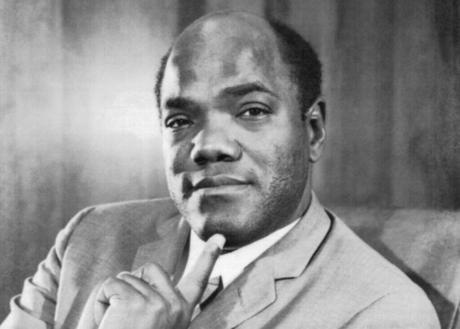
Examples of major players who played crucial roles in the Bahamian independence movement:
- Sir Lynden Pindling: Widely regarded as the “Father of the Nation,” Sir Lynden Pindling was a central figure in the push for independence. His charismatic leadership and unwavering dedication to the cause rallied the Bahamian people and guided the country towards self-governance. Serving as the Prime Minister for an impressive 25 years, Pindling’s influence left a lasting impact on the Bahamas’ political landscape.
- Milo Butler: As the first Bahamian-born Governor-General, Milo Butler played a pivotal role in the Bahamas’ journey to independence. Butler, who was well-known for fighting for the rights of the oppressed and working tirelessly to achieve racial equality, became a representation of development and empowerment. His influential contributions helped shape the Bahamas’ political narrative and ensure that the voice of the people resonated both domestically and internationally.
- Randol Fawkes: A prominent labor leader and politician, Randol Fawkes made significant contributions to the independence movement. He played a significant role in the Bahamas’ labor movement’s establishment and defense of workers’ rights. Fawkes, who subsequently earned the title “Father of Labor,” was crucial in fostering political reform and furthering the causes of social justice and equality.
- Sir Roland Symonette: As a leading figure in Bahamian politics, Sir Roland Symonette made substantial contributions to the push for independence. He was the Progressive Liberal Party’s (PLP) first Premier and one of its founding members. Symonette’s involvement in the political arena provided a vital perspective and added momentum to the movement towards self-determination.
- Dame Doris Johnson: Dame Doris Johnson, a forerunner for women’s rights and gender equality, played a significant role in the struggle for independence. She advocated for suffrage and was instrumental in gaining the right to vote for Bahamian women since she was one of the few female political voices at the time. Johnson’s activism and advocacy paved the way for greater inclusivity and representation in the Bahamas’ political landscape.
These major players, along with numerous others, brought diverse perspectives and united the Bahamian people in their quest for independence. Their leadership, dedication, and unwavering commitment to social progress propelled the nation forward and helped shape the future of the Bahamas as an independent country.
The Transition

The transition to independence was not a simple, straightforward process. It was a period of substantial social and political change that saw the Bahamas navigate the complexities of nation-building. A new constitution for the Bahamas was adopted in 1972, paving the way for independence politically by establishing a bicameral parliament and a governor-general chosen by the British monarch.
However, the transition wasn’t just about political change. It involved a significant cultural shift as well. The Bahamian people embraced their unique cultural heritage, shedding the vestiges of British rule. The national symbols, including the new flag, the coat of arms, and the national anthem, all represented a fresh, distinct identity that celebrated the Bahamas’ rich history and diverse cultural fabric.
Independence Day Celebrations
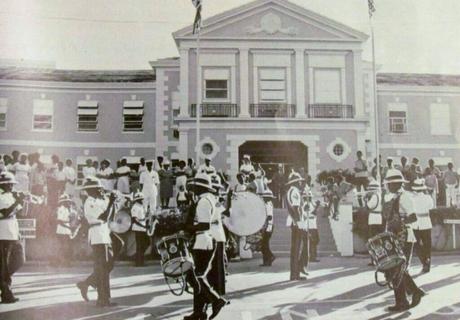
July 10, 1973, marked the Bahamas’ emergence as an independent nation, and the day is commemorated annually as Independence Day. Independence Day celebrations are a riot of color and culture, reflecting the country’s vibrant spirit. Fireworks light up the night sky, while Junkanoo, a traditional Bahamian festival, fills the air with the rhythmic beats of goatskin drums, cowbells, and whistles.
The celebrations go beyond merely marking the anniversary of independence. They serve as a reminder of the path, the challenges, and the triumphs that resulted in the liberation of the country. They are a time for reflection, appreciation, and renewed commitment to the values that underpin the Bahamian society: unity, liberty, and prosperity.
Festive Parades: Independence Day in the Bahamas is marked by lively parades that showcase the country’s rich cultural heritage. Colorful floats, traditional costumes, and vibrant music fill the streets as locals and visitors come together to celebrate. The parades often feature marching bands, dance groups, and cultural performances, creating a festive atmosphere of unity and pride.
Junkanoo: A highlight of the Independence Day celebrations is the spirited Junkanoo festival. Rooted in African traditions, Junkanoo is a vibrant street parade characterized by elaborate costumes, rhythmic music, and energetic dancing. Participants, known as “rushers,” create breathtaking displays of artistry and craftsmanship, while the crowd joins in the revelry, immersing themselves in the infectious rhythms of Junkanoo.
Flag Raising Ceremonies: As a symbol of national identity and sovereignty, the Bahamian flag takes center stage during Independence Day celebrations. Flag raising ceremonies are held across the country, accompanied by patriotic songs and speeches. These ceremonies reinforce the significance of independence and instill a sense of national pride among citizens.
Cultural Exhibitions: Independence Day provides an opportunity to showcase the diverse cultural traditions and artistic expressions of the Bahamas. The richness of Bahamian culture is showcased via cultural displays that are arranged and include local arts and crafts, traditional food, music, and dancing. These exhibitions promote cultural appreciation and preserve the heritage of the nation.
Fireworks Displays: As night falls, the sky illuminates with breathtaking fireworks displays, symbolizing the joy and excitement of the occasion. The night is illuminated by fireworks, producing a mesmerizing display that draws spectators in and lends a sense of grandeur to the festivities. The vibrant bursts of color and shimmering lights evoke a sense of celebration and mark the culmination of the Independence Day festivities.
Independence Day celebrations in the Bahamas serve as a time of national unity and reflection. They pay tribute to the hardships and sacrifices made in the past while also looking optimistically and resolutely towards the future. These vibrant and joyous celebrations embody the spirit and resilience of the Bahamian people as they commemorate their journey to independence.
Impact of Independence
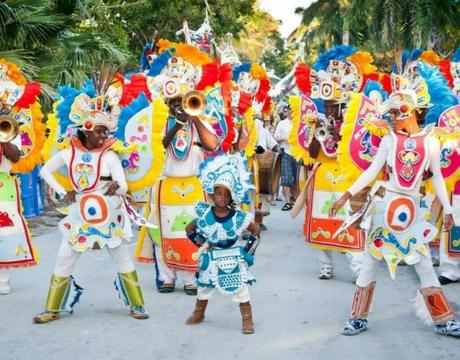
Independence marked a pivotal shift for the Bahamas, triggering substantial economic and social transformations. The islands fostered economic growth by focusing on key sectors like tourism and banking, attracting international investments and emerging as one of the wealthiest Caribbean nations. However, this economic prosperity came with its challenges, as the nation navigated the delicate balance between development and preserving the stunning natural beauty the Bahamas is known for.
On a social level, the Bahamian identity flourished post-independence. A surge in interest in regional culture and history led to the development of a unique national identity that was separate from the nation’s colonial background. This period of introspection and recognition celebrated the rich cultural diversity of the Bahamas, fostering unity among the various islands.
Internationally, independence propelled the Bahamas onto the global stage. The nation joined international organizations such as the United Nations and the Commonwealth, marking its evolution from a colonial outpost to a sovereign entity. In essence, independence didn’t just change the Bahamas’ political status—it transformed its economic landscape, social fabric, and international standing, launching a journey of self-definition and nation-building that endures today.
Bahamas Independence FAQ

What Country Did The Bahamas Gain Independence From?
The Bahamas gained independence from the United Kingdom, its former colonial ruler. After years of British colonial rule, the Bahamas embarked on a journey towards self-governance and autonomy. Through negotiations and peaceful transitions, the Bahamas achieved sovereignty on July 10, 1973, severing its political ties with the United Kingdom.
When Did The Bahamas Get Their Independence?
The Bahamas obtained their independence on July 10, 1973, marking a significant milestone in their history. The road to independence involved a series of constitutional reforms and negotiations between the British government and Bahamian leaders. The Bahamas’ new constitution, which gave the country complete self-governance and the power to determine its own future, was signed as a consequence of these debates.
Does Bahamas Have Independence?
Certainly, the Bahamas has enjoyed full independence since July 10, 1973. The Bahamas gained sovereignty after a peaceful end to British colonial rule, giving them authority over both their internal and foreign affairs. With its own government, legal system, and autonomy, the Bahamas takes charge of its destiny, participating as a member of the international community while maintaining its distinct national identity.

